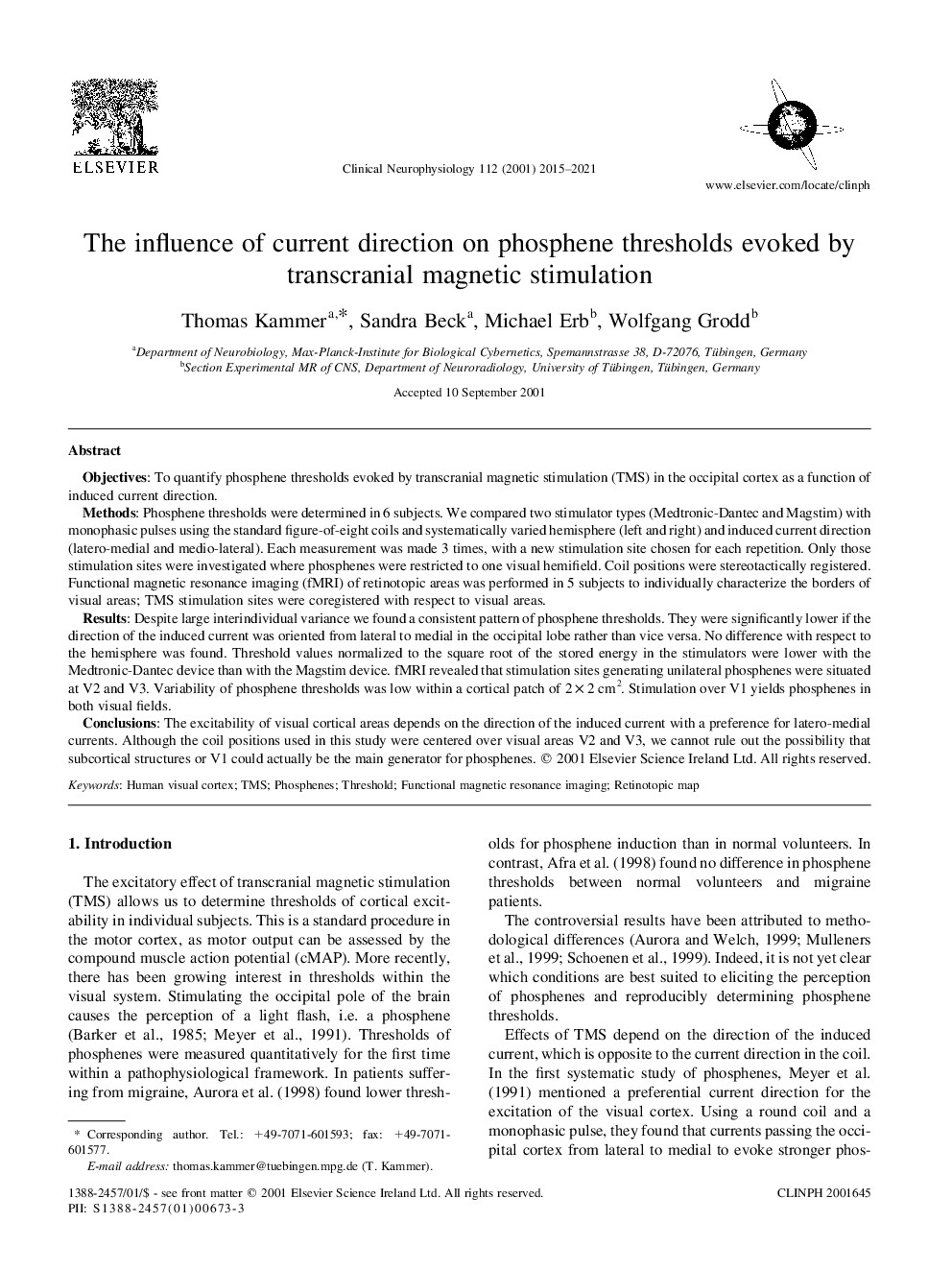| Article ID | Journal | Published Year | Pages | File Type |
|---|---|---|---|---|
| 3049045 | Clinical Neurophysiology | 2015 | 7 Pages |
Objectives: To quantify phosphene thresholds evoked by transcranial magnetic stimulation (TMS) in the occipital cortex as a function of induced current direction.Methods: Phosphene thresholds were determined in 6 subjects. We compared two stimulator types (Medtronic-Dantec and Magstim) with monophasic pulses using the standard figure-of-eight coils and systematically varied hemisphere (left and right) and induced current direction (latero-medial and medio-lateral). Each measurement was made 3 times, with a new stimulation site chosen for each repetition. Only those stimulation sites were investigated where phosphenes were restricted to one visual hemifield. Coil positions were stereotactically registered. Functional magnetic resonance imaging (fMRI) of retinotopic areas was performed in 5 subjects to individually characterize the borders of visual areas; TMS stimulation sites were coregistered with respect to visual areas.Results: Despite large interindividual variance we found a consistent pattern of phosphene thresholds. They were significantly lower if the direction of the induced current was oriented from lateral to medial in the occipital lobe rather than vice versa. No difference with respect to the hemisphere was found. Threshold values normalized to the square root of the stored energy in the stimulators were lower with the Medtronic-Dantec device than with the Magstim device. fMRI revealed that stimulation sites generating unilateral phosphenes were situated at V2 and V3. Variability of phosphene thresholds was low within a cortical patch of 2×2 cm2. Stimulation over V1 yields phosphenes in both visual fields.Conclusions: The excitability of visual cortical areas depends on the direction of the induced current with a preference for latero-medial currents. Although the coil positions used in this study were centered over visual areas V2 and V3, we cannot rule out the possibility that subcortical structures or V1 could actually be the main generator for phosphenes.
